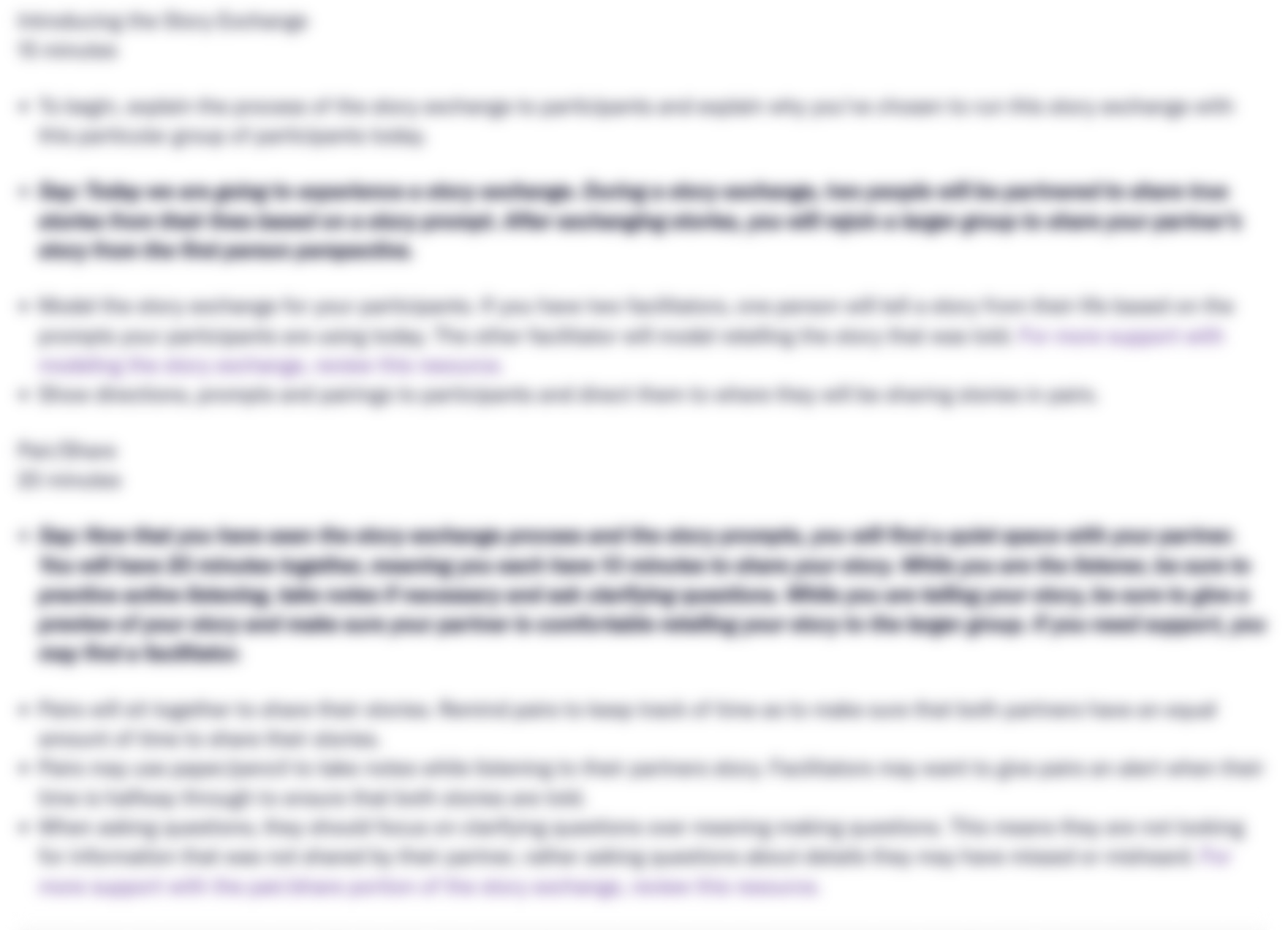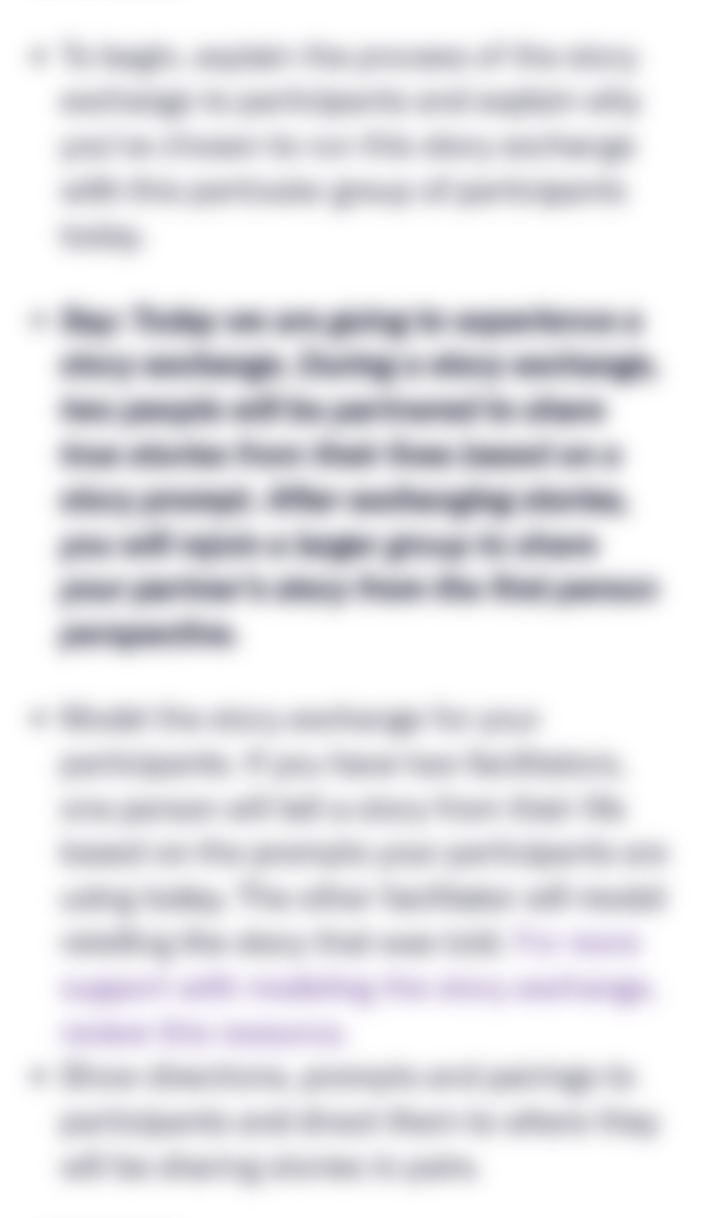Quilted Connections
In what ways do our individual stories come together to form a collective voice? How can art help us reflect and connect after sharing our stories?
During this lesson, participants will reflect on their story exchange experience by creating a story quilt of something that stood out to them. Their quilt can highlight something from their own story, someone else’s story, or themes they heard throughout several stories.
Learning Outcomes
Participants will reflect on personal and shared stories to deepen empathy and understanding while also recognizing how individual stories contribute to a larger community narrative.
Participants will develop their ability to represent abstract ideas like identity, connection, and resilience through art.
Materials
- Piece of paper or fabric (and art supplies for decoration if you're using fabric)
- Writing utensil
- Coloring utensils
Preview Lesson Plan
Introduction (5 minutes)
Say: After hearing and sharing stories in the Story Exchange, we’ve seen how powerful it is to connect through personal experience. Now, we’re going to turn those stories into something visual and lasting. This activity is inspired by artist and activist Faith Ringgold, who combined storytelling, art, and history to share powerful messages about community, identity, and justice. In the 1980s, she began creating ‘story quilts’—colorful fabric artworks that told stories from African American life, especially in her neighborhood of Harlem. These quilts connect to traditions of storytelling and quilting, both important in Black culture and history. Today, you’ll follow in her footsteps by creating your own story square—sharing a piece of your identity, experience, or imagination to add to a larger community quilt.
Facilitators can share more about Faith and her famous, Street Story Quilt, as well as the artistic concept of quilting, highlighting key points from this article by The Metropolitan Museum of Art.

